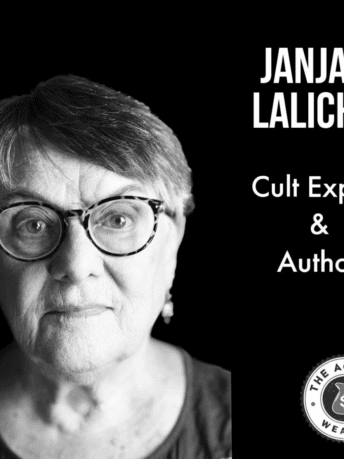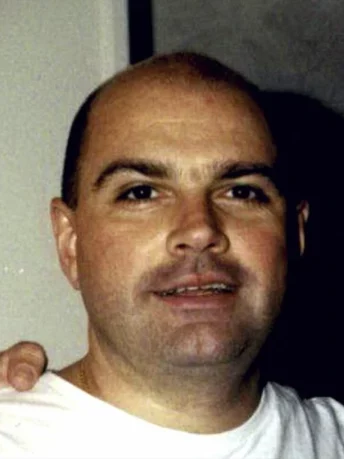Cults did not fade away (as some would like to believe) with the passing of the 1960s and ’70s, when they were first recognized in many places around the world for their growing presence and sometimes controversial practices and activities. Today, in fact, cult groups and relationships are thriving, though many of the long-standing groups have matured and claim to have discontinued some of their more questionable behaviors. If there is less overt street and stranger recruitment today, it is because many cults now use professional associations, campus organizations, self-help seminars, and the Internet as their main recruiting ground. We see people of all ages—even multigenerational families—being drawn into a variety of groups and movements focused on everything from therapy to business ventures, from New Age philosophies to Bible-based beliefs, and from martial arts to political change. Noted cult expert and clinical psychologist Margaret Thaler Singer estimated that approximately 10 to 20 million people have at some point in recent years been in one or more cult groups.
Although use of the word “cult” is somewhat controversial, I tend to use it because I feel it most aptly describes the social structure and social-psychological dynamics. The concept has a long history, going back to the work of late 19th-century sociologist Max Weber. In the past decade or so, some scholars prefer the label “new religious movement” when discussing these groups; however, I find that descriptor inadequate for the simple reason that not all cults are religious in nature. Over the years, some people have used other alternative terms or adjectives to identify cults, such as high-demand, high-control, totalistic, totalitarian, closed charismatic, ultra-authoritarian, and so on. In academia, some rather acrimonious debate has arisen over the use of the word cult, with some academicians and researchers using their influence to dissuade scholars, legal and helping professionals, the media, and others from identifying any group as a cult.
The term “cult,” on the other hand, has value because of its long-standing history in sociological, psychological, and religious studies, and it has the advantage of being understood in contemporary society. Whatever one decides to call these groups, one must not ignore the structural and behavioral patterns that have been identified through years of study and research, or through the numerous accounts of people who successfully left cult groups and relationships. To sweep cults under the rug or to call them by another name won’t make cults go away—nor will it aid us in understanding these complex social systems. Most importantly, cover-ups and whitewashing won’t help former cult members evaluate or recover from their experiences in a whole and healthful manner.
Definitional clarity, of course, is important in order to be clear about usage of the term; nevertheless, varied interpretations will continue to abound. For me, the word cult denotes groups with a certain kind of power structure and internal relations of power based on charismatic authority. I use the following definition:
A cult can be either a sharply bounded social group or a diffusely bounded social movement held together through a shared commitment to a charismatic leader. It upholds a transcendent ideology (often but not always religious in nature) and requires a high level of commitment from its members in words and deeds.
This definition is not meant to be evaluative, dismissive, or one-sided in the sense of implying that a group is good, bad, or other. My aim is to convey a systemic view of such a group, which includes a charismatic relationship and a promise of fulfillment along with a methodology by which to achieve it.
Not all cults are the same, and they may vary across time or location. Cults differ in their ruling ideologies or belief systems, as well as in their specific practices, requirements, and norms. Some may be more extreme than others. Cults exist on a continuum of influence (i.e., the effect on members and on society) and a continuum of control (i.e., from less invasive to all-encompassing), rendering them from benign to dangerous and harmful. Cults are frequently totalistic and separatist, but do not necessarily have to be. Each group must be observed and judged on its own merits and its own practices and behaviors.
Categories of Cults
Cults come in a variety of shapes and sizes. Not every person’s experience will fit neatly into these following categories, but this list should provide some idea of the range of cults and their reach into every walk of life.
Eastern cults
Eastern cults are characterized by belief in spiritual enlightenment and reincarnation, attaining the Godhead, and nirvana. Usually the leader draws from and distorts an Eastern-based philosophy or religion, such as Hinduism, Buddhism, Sikhism, or Sufism. Sometimes members learn to disregard worldly possessions and may take on an ascetic and/or celibate lifestyle. Practices and influence techniques include extensive meditation, repeated mantras, altered states of consciousness, celibacy or sexual restrictions, fasting and dietary restrictions, special dress or accoutrements, altars, and induced trance through chanting, spinning, or other techniques.
Religious cults
Religious cults are marked by belief in a god or some higher being, salvation, and the afterlife, sometimes combined with an apocalyptic view. The leader reinterprets Scripture (from the Bible, Koran, Talmud, or Cabala) and often claims to be a prophet, if not the messiah. Typically the group is strict, sometimes using such physical punishments as paddling and birching, particularly of children. Often members are encouraged to spend a great deal of time proselytizing. Included here are Bible-based, neo-Christian, Islamic, Jewish or Hebrew, and other religious cults, many of which combine beliefs and practices from different faiths. Practices and influence techniques include speaking in tongues, chanting, praying, isolation, lengthy study sessions, faith healing, self-flagellation, or many hours spent evangelizing, witnessing, or making public confessions.
Political, racist, or terrorist cults
Political, racist, or terrorist cults are fueled by belief in changing society, revolution, overthrowing the perceived enemy or getting rid of evil forces. The leader professes to be all knowing and all powerful. In some cases, adherents may be more drawn to an extreme ideology rather than a leader per se. Groups tend to operate as secret cells. Often the group and/or individuals are armed and engage in violent activities, including arson, kidnapping, bombing, and suicide bombs. Such groups typically meet in secret with coded language, handshakes, and other ritualized practices. Members consider themselves an elite cadre ready to go to battle. Practices and influence techniques include paramilitary training, reporting on one another, fear, struggle or criticism sessions, instilled paranoia, violent acts to prove loyalty, long hours of indoctrination, or enforced guilt based on race, class, or religion.
Psychotherapy, human potential, mass transformational cults
Psychotherapy, human potential, mass transformational cults are motivated by belief in striving for the goal of personal transformation and personal improvement. The leader is self-proclaimed and omniscient, with unique insights, sometimes a “super-therapist” or “super-life coach.” Practices and techniques include group encounter sessions, intense probing into personal life and thoughts, altered states brought about by hypnosis and other trance-induction mechanisms, use of drugs, dream work, past-life or future-life therapy, rebirthing or regression, submersion tanks, shame and intimidation, verbal abuse, or humiliation in private or group settings.
Commercial, multi-marketing cults
Commercial, multi-marketing cults are sustained by belief in attaining wealth and power, status, and quick earnings. The leader, who is often overtly lavish, asserts that he has found the “way.” Some commercial cults are crossovers to political and religious cults because they are based on ultra-conservative family values, strict morals, good health, or patriotism. Members are encouraged to participate in costly and sometimes lengthy seminars and to sell the group’s “product” to others. Practices and influence techniques include deceptive sales techniques, guilt and shame, peer pressure, financial control, magical thinking, or guided imagery.
New Age cults
New Age cults are founded on belief in the “You are God” philosophy, in power through internal knowledge, wanting to know the future, or find the quick fix. Often the leader presents herself or himself as mystical, an ultra-spiritual being, a channeler, a medium, or a superhero. New Age groups, more so than some of the other types, tend to have female leaders. Members rely on New Age paraphernalia, such as crystals, astrology, runes, shamanic devices, holistic medicine, herbs, spirit beings, or Tarot or other magic cards. Practices and influence techniques: magic tricks, altered states, peer pressure, channeling, UFO sightings, “chakra” adjustments, faith healing, or claiming to speak with or through ascended masters, spiritual entities, and the like.
Occult, satanic, or black-magic cults
Occult, satanic, or black-magic cults are generated through belief in supernatural powers, and sometimes worship of Satan. The leader professes to be evil incarnate. Animal sacrifice and physical and sexual abuse are common; some groups claim they perform human sacrifice. Practices and influence techniques include exotic and bizarre rituals, secrecy, fear and intimidation, acts of violence, tattooing or scarring, cutting and blood rituals, sacrificial rituals, or altars.
One-on-one or family cults
One-on-one or family cults are based in belief in one’s partner, parent, or teacher above all else. Generally an intimate relationship is used to manipulate and control the partner, children, or students, who believe the dominant one to have special knowledge or special powers. Often there is severe and prolonged psychological, physical, and sexual abuse. Practices and influence techniques include pleasure/pain syndrome, promoting self-blame, induced dependency, induced fear and insecurity, enforced isolation, battering and other violent acts, incest, or deprivation.
Cults of personality
Cults of personality are rooted in a belief that reflects the charismatic personality and interests and proclivities of the revered leader. Such groups tend to revolve around a particular theme or interest, such as martial arts, opera, dance, theater, a certain form of art, or a type of medicine or healing. Practices and influence techniques include intense training sessions, rituals, blatant egocentrism, or elitist attitudes and behaviors.
Cults as Power Structures
Based on my study of cultic structures and dynamics, I have developed a new framework and theory for use in examining and analyzing these groups. The theory, called “bounded choice,” was first presented in my book Bounded Choice: True Believers and Charismatic Cults. I present here an abbreviated version of the bounded-choice perspective.
Four interlocking dimensions make up the framework of a cult’s social system and dynamics. These four dimensions are clearly separated here so that former cult members (whose memories of cult experiences are often confused and conflicting) can more easily deconstruct and understand each phase of indoctrination and control. In actuality, these dimensions are overlapping and interlocked.
- Charismatic Authority. This is the emotional bond between a leader and his or her followers. It lends legitimacy to the leader and grants authority to the leader’s actions while at the same time justifying and reinforcing followers’ responses to the leader and/or the leader’s ideas and goals. Charisma could be identified as the “hook” that links a devotee to a leader and/or his ideas. The general purpose of charismatic authority is to provide leadership. The specific goal is for the leader to be accepted as the legitimate authority and to offer direction. This is accomplished through privilege and command. The desired effect, of course, is that members will believe in and identify with the leader, as well as regard that person as someone special, someone to be revered.
- Transcendent Belief System. This is the overarching ideology that binds adherents to the group and keeps them behaving according to the group’s rules and norms. It is transcendent because it offers a total explanation of past, present, and future, including the path to salvation. Most importantly, the leader/group also specifies the exact methodology (or recipe) for the personal transformation necessary to travel on that path (and be an accepted member of the group). The goal of the transcendent belief system is to provide a worldview that offers meaning and purpose through a moral imperative. This imperative requires each member to subject himself or herself to a process of personal transformation. The desired effect is for the member to feel a sense of connection to a greater goal while aspiring to salvation. This effect is solidified through the internalization of the belief system and its accompanying behaviors and attitudes.
- Systems of Control. This is the network of acknowledged—or visible—regulatory mechanisms that guide the operation of the group. It includes the overt rules, regulations, and procedures that guide and control members’ behavior. The purpose of the systems of control is quite simply to provide organizational structure. The specific goal is to create a behavioral system and disciplinary code through rules, regulations, and sanctions. The effect is compliance, or better still, obedience.
- Systems of Influence. This is the network of interactions and social influence that resides in the group’s social relations. This interaction and resultant group culture teach members to adapt their thoughts, attitudes, and behaviors in relation to their new beliefs. The purpose of the systems of influence is to shape the group culture. The specific goal is to create institutionalized group norms and an established code of conduct by which members are expected to live. This is accomplished by various methods of peer and leadership pressure, and through social-psychological influence and modeling. The desired effect is conformity and the self-renunciation that is required not only to be part of the group but also to achieve the professed goal.
The combination of these four dimensions—transcendent belief systems, all-encompassing systems of interlocking structural and social controls, and highly charged charismatic relationships between leader(s) and adherents—results in what I call a “self-sealing system” that exacts a high degree of commitment (as well as expressions of that commitment) from its core members. A self-sealing system is one that is closed in on itself, allowing no consideration of disconfirming evidence or alternative points of view. In the extreme, a self-sealed group is exclusive and its belief system is all-inclusive, in the sense that it provides answers to everything. Typically, the quest of such groups is to attain a far-reaching ideal. However, a loss of sense of self for the individual adherent is all too often the by-product of that quest.
Bounded Choice—The True Believer’s Predicament
Based on two decades of research, my own experience in a cult, and in particular an in-depth comparative study of two contemporary American cults (the Democratic Workers Party, a political cult, and Heaven’s Gate, based on an eclectic mix of ideas from the New Age movement, traditional Christianity, and ufology), I developed this new model to help explain the cult mind-set, particularly the troubling issue of why some cult members behave or act in ways that appear to be irrational, harmful, or against their self-interest.
The four-part framework described above helps us see how everything in a totalistic group tends to fit together like a three-dimensional puzzle. Every occurrence—even events in the outside world—neatly fits the leader’s scheme, with very little happening by chance, or so it seems. Everything is interpreted to coincide with the leader’s absolutist worldview, including the reframing of the leader’s and the members’ personal lives. On occasion even the group’s basic ideology gets changed to adapt to world developments or specific occurrences: for example, failed prophecies of impending Armageddon were explained away by leaders of the Jehovah’s Witnesses, who, over time, also changed edicts regarding vaccinations, organ transplants, and blood transfusions. The early Mormons changed their stance on polygamy and other suspect practices, as well as their policies on the inclusion of non-White members.
In this vein, Marshall Applewhite, the leader of Heaven’s Gate, had to change that group’s vision of how they would “leave this earth” after his female co-leader died of a specifically earthly disease, cancer. The surety of the group being picked up (“saved”) by spaceships, which was what they believed would happen, was now up in the air, so to speak. Another probable outcome of his partner’s death was that Applewhite (and therefore the group) changed his stance on suicide. Early on these two leaders swore they were against suicide, insisting neither they nor their “students” would take their own lives. Instead, they believed they were going to literally metamorphose (change physical form) before ascending to the “Next Level.” The hoped-for metamorphosis did not occur, but mass suicide did.
In cultic power structures with their systems of influence and control, the leader and members alike have roles to play. A member’s goal is to pit oneself against an impossible ideal and to continually criticize oneself for failing to achieve it. Meanwhile the leader’s goal is to perfect a body of followers who will continually strive for that impossible ideal and laud the leader all along the way. When the process works, leaders and members alike are locked into a “bounded reality”—that is, a self-sealing social system in which every aspect and every activity reconfirms the validity of the system. There is no place for disconfirming information or other ways of thinking or being. This is an example of the process identified by social psychologist Edgar Schein as coercive persuasion.
Within this context, personal choices become organizational choices—and essentially, it is the leader who makes organizational choices, for no one else is qualified or has the authority to do so. At this point, personal choices, if and when they arise, are formulated within and constrained by the cult’s self-sealing framework and style of deliberation, which always puts the organization first. Additionally, those choices are hampered, or bounded, by the constriction of each member’s thought patterns, which, once again, always put the organization first. This is the heart of the bounded-choice concept.
As a consequence of successful indoctrination and resocialization, the individual has become, in a sense, a microcosm of the larger self-sealing system. He has entered what psychiatrist Robert Jay Lifton identified as a state of personal closure, or the closing in of the self in the larger self-sealed system. This becomes a psychological trap for the cult member. The closed state of mind that is the culmination of cult life is profoundly confining because the adherent is closed off both to the outside world and to her own inner life.
In a cultic system, the boundaries of knowledge are shut tight and reinforced through resocialization processes, the use of ideology, and the institutionalization of social controls. The goal of this profound worldview shift is the reconstruction of personality. The ultimate aim is to get the devotee to identify with the “socializing agent”—the cult leader, the patriarch or matriarch of the cult, or the controlling and abusive partner, as the case may be. The desired outcome is a new self (the cult-shaped persona) whose actions will be dictated by the “imagined will” of the authoritative figure. In other words, neither the charismatic leader nor others in the group need be present to tell a follower what to do; rather, having internalized the lessons and adapted her outlook, the loyal and true believer knows precisely what she needs to do to stay in the good graces of the all-knowing and all-powerful leader. The true believer needs only “imagine” what actions to take, knowing full well that she will act within the bounds of the cult’s reality, for in a sense her self has merged with the leader and the group. What other reality is there? The one thing the truly devoted adherent cannot imagine is life outside the group. In other words, the cult member is constrained by both external (real or imagined) and internalized sanctions. At this point, whatever choices remain are “bounded” ones. They are choices, yes, but not free ones. Essentially, given the context, they become choices of life or death—figuratively and, in some cases, literally.
This social-psychological predicament, this bounded choice, contributes to our understanding of why it is so difficult to leave a cult or an abusive cultic relationship. And hopefully, for the former cult member who uses this framework as a tool to analyze his experience, it may be easier to understand why he stayed, why he did what you did, and why he believed what he did. Cult members are enveloped by a powerful combination of forces that are in many instances totalistic, manipulative, and harmful in some way as well. Grasping the enormity of that situation allows former cult members to cease doubting and blaming themselves and to feel some sense of relief and clarity about their involvement and behavior. This is not to imply that cult members have no personal responsibility for their actions: they do—we all do (unless a gun is held to our heads). But we must take into consideration that cult members are functioning under the pressure and duress of what the legal world calls “undue influence.” Free will was not taken away per se, but it was certainly distorted and restricted.
Resources
- Singer, Margaret Thaler. 2003. Cults in Our Midst, rev. ed. San Francisco, CA: Jossey-Bass.
- Weber, Max. 1922/1964. The Sociology of Religion. Trans. E. Fischoff. Boston, MA: Beacon Press.
- An example of these debates and arguments can be found in Misunderstanding Cults: Searching for Objectivity in a Controversial Field, edited by Benjamin Zablocki and Thomas Robbins (Toronto: University of Toronto Press, 2001).
- Lalich, Janja. 2004. Bounded Choice: True Believers and Charismatic Cults. Berkeley: University of California Press.
- Much of this section is adapted from Take Back Your Life: Recovering from Cults and Abusive Relationships by Janja Lalich and Madeleine Tobias (Berkeley, CA: Bay Tree, 2004).
- Schein, Edgar. 1997. Organizational Culture and Leadership, 2nd ed. San Francisco, CA: Jossey-Bass.
- Schein, Edgar, with I. Schneier and C.H. Barker. 1961. Coercive Persuasion: A Social Pyshoclogical Analysis of the “Brainwashing” of American Civilian Prisoners by the Chinese Communists. New York: Norton.
- Lifton, Robert Jay. 1961. Thought Reform and the Psychology of Totalism. New York: Norton.
- Giddens, Anthony. 1984. The Constitution of Society: Outline of the Theory of Structuration. Berkeley: University of California Press.
- Coleman, James S. 1990. Foundations of Social Theory. Cambridge, MA: Belknap Press.
- Ibid.
Copyright © Janja Lalich






